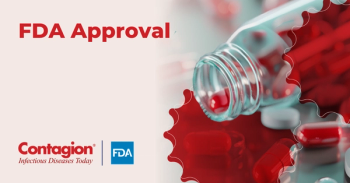
PrEP Care Should Be Viewed as a Continuum: Here's Why
Brown University researchers propose thinking about pre-exposure prophylaxis (PrEP) as a nine-step continuum of preventive care, one that improves uptake and focuses on retention in care.
Over 36 million individuals worldwide are living with
Keeping this in mind, researchers at Brown University are looking for ways of improving preventive care. To do so, they have proposed a new system “for understanding and evaluating how PrEP is implemented in clinical practice,” according to a recent
In an email exchange with Contagion®, Amy Nunn, ScD, MS, associate professor at the Brown University School of Public Health, explained the importance of a continuum. She said, “It is helpful to view PrEP care as a continuum of ‘steps’ to understand exactly how we can provide them care that responds to their HIV prevention needs. Some patients need help understanding their HIV risks, some need help navigating the medical system, some may have trouble adhering, and some may not be able to afford medical services. We felt it was important to identify these steps.” She continued, “We thought it was important to highlight challenges related to uptake and care, both of which have been somewhat overlooked in public policy discussions related to PrEP. We want to emphasize retention in care because many people are lost to follow-up, and retaining people is important for reducing their HIV risks.”
When it comes to PrEP programs, healthcare practitioners have noted that a number of individuals face difficulties when it comes to adhering to their prescribed treatment regimens; this happens for a number of different reasons depending on each patient. The following factors can make
In an email interview, Philip Chan, MD, co-author of the paper, assistant professor of medicine at Brown’s Warren Alpert Medical School and an infectious disease physician at the Miriam Hospital, explained to Contagion®, “In research studies, people are often paid financial incentives to attend visits. In a couple of the large research trials, individuals reported taking the PrEP medication when they weren’t. We don’t fully understand why, but they may have continued coming to clinical visits because of the financial incentives for participating in the trial. In real-world clinical settings, there are no incentives for visits; patients usually present for clinical care because they are interested in improving their health and well-being.”
In a
According to the press release, the researchers came up with nine steps:
- Identifying individuals at highest risk for contracting HIV
- Increasing HIV risk awareness among them
- Enhancing PrEP awareness
- Facilitating PrEP access
- Linking to PrEP care
- Prescribing PrEP
- Initiating PrEP
- Adhering to PrEP
- Retaining individuals in PrEP care
The first three steps are dedicated solely to PrEP awareness. “These three steps are important to start the continuum of care. Specifically, we have noted that perceived risk of HIV is a key barrier to uptake in a lot of people (eg people who are at risk of HIV underestimate their risk). HIV is often heavily stigmatized because of the way it’s transmitted, and many people believe that they couldn’t actually acquire HIV,” explained Dr. Nunn.
The central focus of steps four through seven concern PrEP uptake. When asked if this will address patients’ socioeconomic status, as well as gender and racial-specific considerations that can impact PrEP uptake, Dr. Chan said, “We believe a culturally congruent response to PrEP care is important for ALL steps for the continuum. Populations of color as well as men who have sex with men (MSM) are at disproportionately higher risk for contracting HIV. While PrEP uptake has been high among white MSM, it has been much lower for African American and Hispanic populations. We have also found that people of color are retained in PrEP care at lower rates than their white counterparts. All of these challenges highlight the importance of tailoring programs to these specific subpopulations.”
For populations who are at highest risk, adherence to PrEP regimens are all the more important and potentially lifesaving. When it comes to the implementation of these steps, to ensure that those who are, in fact, at highest risk will be identified and assisted, Dr. Nunn explained, “We need healthcare providers who can provide culturally appropriate PrEP care services. We also have found that patients often need ‘wrap around’ services to navigate health systems. These can be provided by clinical support staff.”
Retention in care may be an even more important measure of success for the evaluations of the public health impact of PrEP than adherence, according to the researchers. For this reason, Drs. Nunn and Chan will be completing additional studies to understand when and why patients cease to be retained in care.
“We need to understand WHY people aren’t being retained in care and to explore different approaches to keep them in care. This may include ways to stay more engaged with patients, such as having a patient navigator who helps respond to clients’ specific needs,” Dr. Chan concluded.
Newsletter
Stay ahead of emerging infectious disease threats with expert insights and breaking research. Subscribe now to get updates delivered straight to your inbox.




















































































































































































































































































